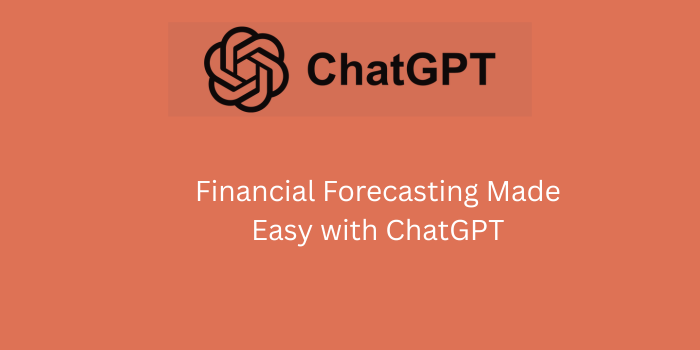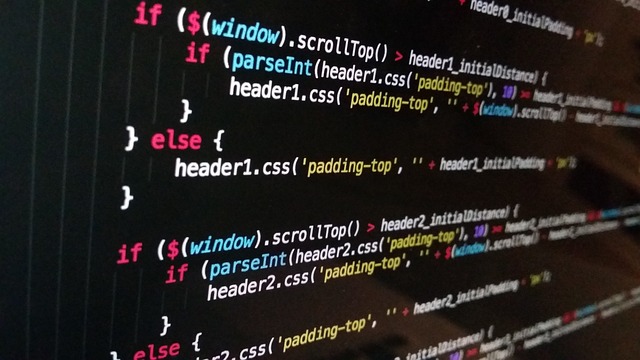Financial forecasting is a crucial part of business strategy, budgeting, and long-term planning. With the rise of artificial intelligence, businesses can now automate and optimize this process using tools like ChatGPT. Whether you’re a startup founder, finance manager, or small business owner, leveraging ChatGPT for financial forecasting can save you time, reduce human error, and provide data-driven insights.
What is Financial Forecasting?
Financial forecasting is a critical business practice that involves estimating or predicting how a company will perform financially in the future. It plays a key role in helping businesses make informed decisions, allocate resources effectively, and set realistic goals.
By analyzing historical financial data and market trends, organizations can project future revenues, operating expenses, cash flow, and net income over a defined period—typically monthly, quarterly, or annually.
These forecasts help identify potential risks and opportunities, allowing businesses to proactively plan for growth or downturns. Financial forecasting also supports strategic planning, budgeting, and investor communications, making it essential for startups, small businesses, and large enterprises alike.
Whether you’re launching a new product, seeking investment, or simply trying to maintain financial stability, having a reliable forecast enables smarter choices. Ultimately, the goal of financial forecasting is to create a roadmap for success that aligns financial resources with long-term business objectives and market realities.
Common Types of Financial Forecasting
Financial forecasting can be approached in several ways depending on the specific goals of a business. Each type of forecast provides valuable insights into different areas of financial health, helping organizations make better decisions and prepare for future changes.
Below are the most common types of financial forecasting used across industries:
- Revenue Forecasting: Predicts future sales based on historical data and market trends.
- Expense Forecasting: Estimates future costs to manage budgets effectively.
- Cash Flow Forecasting: Helps track the inflow and outflow of cash.
- Profit Forecasting: Determines projected net income over time.
Why Use ChatGPT for Financial Forecasting?
ChatGPT, developed by OpenAI, is a powerful AI model capable of processing complex queries, generating reports, and assisting with calculations. Here’s why it’s ideal for financial forecasting:
- Automation: ChatGPT can automate repetitive forecasting tasks.
- Speed: It can analyze financial data and produce forecasts quickly.
- Accuracy: AI reduces manual errors by using reliable data-driven predictions.
- Accessibility: No need for coding or advanced Excel skills.
- Scalability: Suitable for small businesses, startups, and large enterprises.
How to Use ChatGPT for Financial Forecasting
To get started with financial forecasting using ChatGPT, you don’t need any advanced technical skills—just the ability to communicate your needs clearly. ChatGPT responds effectively to plain language prompts, making it accessible for business owners, managers, and finance professionals alike. Whether you’re forecasting monthly revenue or planning annual expenses, you can guide ChatGPT by providing context, historical data, and specific goals. The key is to be as detailed as possible in your request so the AI can generate accurate and useful insights.
Below are step-by-step instructions to help you make the most of ChatGPT’s forecasting capabilities.
1. Define Your Financial Goals
Before using ChatGPT for financial forecasting, it’s important to define your specific goals. Knowing exactly what you want to project will help you get more accurate and relevant results from the AI.
Ask yourself what type of forecast you need. Are you looking for a quarterly revenue projection to guide short-term decisions, or a 12-month cash flow estimate to support long-term planning and financial strategy?
2. Collect Historical Data
Start by gathering accurate historical financial records, including sales reports, profit and loss statements, balance sheets, and expense breakdowns. This foundational data is essential for any reliable financial forecasting process.
When used with ChatGPT, this information helps the AI identify trends, detect seasonal patterns, and generate accurate projections. Clean, organized financial data enhances the effectiveness of AI-powered forecasting and supports smarter, data-driven business decisions.
3. Input a Prompt into ChatGPT
Use a detailed prompt such as:
“Using the following sales data from the past 6 quarters, forecast the next two quarters of revenue assuming a 10% growth rate.”
“Analyze my monthly expenses from the past year and predict the next three months.”
“Create a cash flow forecast based on these quarterly figures and factor in a 15% increase in marketing spend.”
“Generate a financial projection for the next fiscal year, assuming steady 8% growth in revenue and a 5% increase in operating costs.”
The more context you provide in your prompt—such as specific numbers, timelines, or business scenarios—the more accurate and useful your financial forecast from ChatGPT will be.
4. Analyze the Output
ChatGPT will return a detailed financial forecast tailored to your input. The results often appear in tabular or bullet-point format, making it easy to understand and use for presentations or internal planning.
In addition to projecting figures, ChatGPT can highlight important assumptions, identify potential risks, and suggest external factors that may influence your forecast. This AI-powered insight supports more accurate and strategic financial planning.
5. Refine and Iterate
You can refine your input to get better output. For example, ask:
“Add seasonal adjustments for Q4 and factor in a marketing spend increase.”
Or try:
“Forecast revenue growth assuming a 15% increase in customer acquisition rates.”
Another option could be:
“Consider a 5% reduction in operating expenses due to efficiency improvements in production.”
These refinements allow ChatGPT to generate more precise and customized financial projections.
Best Prompts for Financial Forecasting with ChatGPT
To get the most out of ChatGPT for financial forecasting, it’s important to provide clear and specific prompts. By doing so, you can ensure more accurate and relevant forecasts that meet your business needs. For example, you can ask ChatGPT to generate projections based on specific variables such as growth rates, timeframes, or seasonal adjustments. Here are some best prompts to try:
- “Forecast the next 12 months of expenses based on this data.”
- “Create a financial projection with 5% quarterly growth.”
- “Estimate monthly cash flow based on these historical figures.”
- “Generate a breakeven analysis for my startup.”
- “Help me create a financial model for a SaaS business.”
These tailored prompts can guide ChatGPT in delivering specific insights that are vital for effective financial planning.
Real-World Use Cases
ChatGPT’s versatility makes it an ideal tool for a variety of industries. Startups and small businesses, in particular, can benefit from its ability to generate financial forecasts without the need for costly consultants. Financial analysts can also use ChatGPT to quickly assess multiple scenarios and create detailed financial models. For e-commerce businesses, ChatGPT can forecast product demand, predict cash flow, and assess the impact of marketing campaigns.
Whether you’re looking to project future earnings, create an investor pitch, or optimize your budget, ChatGPT offers a practical and scalable solution for all business sizes.
Startups and Small Businesses
Entrepreneurs often face challenges when it comes to financial planning, especially due to limited resources. Hiring full-time financial analysts can be expensive, making it difficult for startups to maintain a structured financial approach.
This is where ChatGPT comes in. With its ability to generate budget forecasts, ChatGPT helps entrepreneurs plan for the future by providing accurate, data-driven financial predictions.
Additionally, ChatGPT assists in creating pitch decks and investment projections, making it an invaluable tool for entrepreneurs seeking funding or refining business strategies. Using AI-powered financial forecasting tools can give small businesses a competitive edge.
Financial Analysts
Professionals can leverage ChatGPT for financial modeling, simplifying complex projections and enhancing accuracy. By utilizing AI-driven insights, they can create dynamic models that adapt to different business scenarios.
In addition, ChatGPT is valuable for scenario planning, helping finance teams evaluate various financial outcomes based on changing assumptions and market conditions. This feature ensures better decision-making in uncertain times.
Finally, ChatGPT aids in generating narrative explanations, providing clear and concise financial reports for clients or stakeholders. This makes it easier to communicate forecast results effectively.
E-commerce Stores
Online sellers can leverage ChatGPT for accurate product demand forecasting. By analyzing historical sales data, ChatGPT helps predict which products are likely to perform well in the upcoming months. This enables businesses to stock efficiently and minimize waste.
Seasonal sales spikes are another critical area where ChatGPT can be valuable. By considering past trends, ChatGPT can forecast when these spikes will occur, helping businesses plan their strategies.
Additionally, ChatGPT can assist in forecasting marketing ROI. By analyzing past campaigns, it predicts the return on future investments in marketing, providing valuable insights for decision-making and budgeting.
Benefits of Financial Forecasting with ChatGPT
Using ChatGPT for financial forecasting offers a range of advantages that can streamline business planning and improve decision-making. This AI-powered tool helps businesses generate accurate forecasts faster, reduces manual workload, and provides data-driven insights without requiring advanced financial expertise. Whether you’re projecting revenue, managing expenses, or evaluating growth opportunities, ChatGPT simplifies the process and enhances the reliability of your financial outlook.
- Time Efficiency: No need to manually build models from scratch.
- Customizable Reports: Create investor-ready forecasts tailored to your business.
- Scenario Planning: Easily test different growth scenarios or funding rounds.
- Data Insights: Spot trends and make data-backed decisions.
AI Tools That Enhance ChatGPT for Financial Forecasting
Combine ChatGPT with other tools to unlock more forecasting power:
- Excel + ChatGPT: Use AI to generate formulas and interpret spreadsheet data.
- Zapier: Automate data flows into ChatGPT for real-time forecasting.
- Notion + ChatGPT: Create real-time financial dashboards using AI insights.
Challenges and Limitations
While ChatGPT is powerful, it’s not a full accounting system. It doesn’t directly integrate with QuickBooks, Xero, or other accounting tools unless used via APIs or third-party automation tools.
- Requires clean data: Garbage in, garbage out still applies.
- No real-time syncing: Manual updates are still necessary unless automated.
- Regulatory Compliance: Always validate AI-generated reports with professional accountants or financial advisors.
Tips to Improve Financial Forecast Accuracy
- Always base your prompts on clean, organized historical data.
- Use specific time frames and percentage assumptions in prompts.
- Update forecasts regularly with actual financial performance.
- Validate AI outputs with financial professionals.
Conclusion:
ChatGPT is transforming how we approach financial forecasting. Its ability to quickly analyze data, simulate scenarios, and provide tailored financial projections makes it a must-have tool in any business toolkit. As AI continues to evolve, financial planning will become faster, smarter, and more accurate.
If you’re ready to streamline your financial processes, start experimenting with ChatGPT today. With a few well-structured prompts, you’ll be forecasting your way to smarter business decisions in no time.






